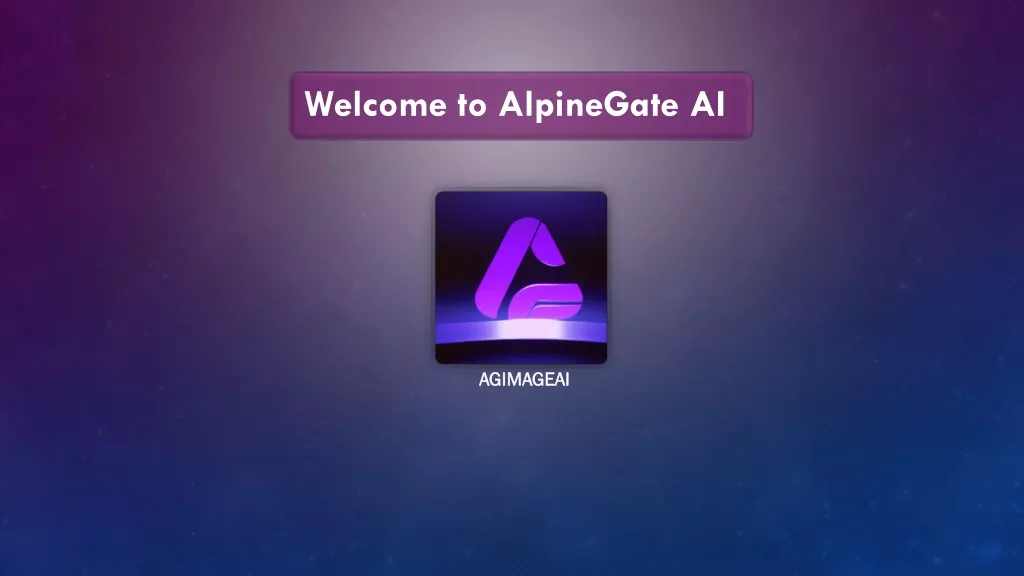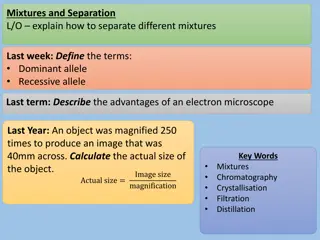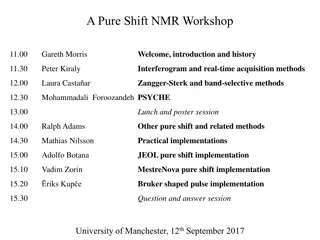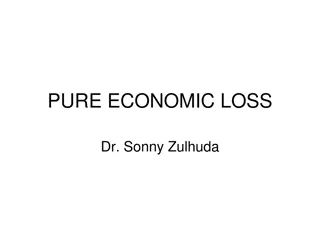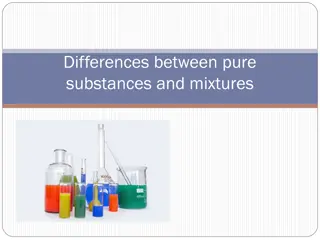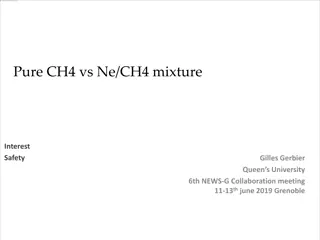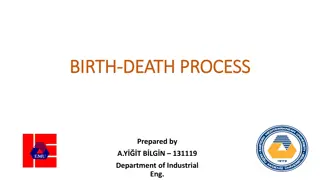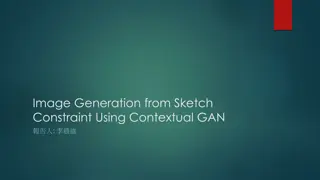Pure Shift Implementation by Dr. Adolfo Botana - JEOL Image Gallery
Explore a collection of images showcasing the Pure Shift Implementation by Dr. Adolfo Botana at JEOL. Dive into the basics, experiment submissions, proton vs. pure shift comparisons, processing techniques, pulse sequence coding, and more. Witness innovative processing methods and cutting-edge technology in action.
Download Presentation

Please find below an Image/Link to download the presentation.
The content on the website is provided AS IS for your information and personal use only. It may not be sold, licensed, or shared on other websites without obtaining consent from the author.If you encounter any issues during the download, it is possible that the publisher has removed the file from their server.
You are allowed to download the files provided on this website for personal or commercial use, subject to the condition that they are used lawfully. All files are the property of their respective owners.
The content on the website is provided AS IS for your information and personal use only. It may not be sold, licensed, or shared on other websites without obtaining consent from the author.
E N D
Presentation Transcript
PURE SHIFT IMPLEMENTATION Dr. Adolfo Botana JEOL
Basics 2
Experiment submission 1 Automated acquisition and processing 2 3 3
1D from 2D interferogram (new) Next Delta release: 2D from 3D interferograms 8
Basics (ZS) header process = "pureshift.list"; include "header"; end header; pulse collect COMPLEX,OBS REAL; x_pulse => x90, help "90deg pulse width"; x_atn =? xatn; relaxation_delay => 2[s], help "inter-pulse delay"; instrument include "instrument"; end instrument; [ ] acquisition x_domain x_offset x_sweep x_points scans [ ] end acquisition; => "Proton"; => 5[ppm]; => 10[ppm]; => 2000; => 8; phase_1 = {0, 180, 180, 0, 90, 270, 270, 90}; phase_2 = {0, 0, 180, 180}; phase_3 = {0}; phase_4 = {90}; phase_slice = {0, 0, 180, 180}; phase_acq = {0, 180, 180, 0, 90, 270, 270, 90}; [ ] 11
Basics (ZS) 12
Basics (ZS) begin relaxation_delay; x_pulse, (obs.gate, obs.phs.phase_1, obs.atn.x_atn); t1 ystep 1/(2*y_sweep); grad_1, (fgz.gate, fgz.shape.grad_1_shape, fgz.amp.grad_1_amp); tau_a - grad_1; obs_sel_180, (obs.gate, obs.phs.phase_slice, obs.atn.obs_sel_atn180, obs.shape.obs_sel_shape, fgz.gate, fgz.shape.grad_slice_shape, fgz.amp.grad_slice_amp); parallel begin (tau_a + tau_b); justify center grad_2, (fgz.gate, fgz.shape.grad_2_shape, fgz.amp.grad_2_amp); end parallel; x_pulse * 2, (obs.gate, obs.phs.phase_2, obs.atn.x_atn); grad_3, (fgz.gate, fgz.shape.grad_3_shape, fgz.amp.grad_3_amp); tau_b - grad_3; t1 ystep 1/(2*y_sweep); acq( dead_time, delay, phase_acq ); end pulse; 13
Pulse shape calculations (PSYCHE) b1_attn =? 20[dB] * log (sqrt (0.5*band_width/chirp_pulse*q) *4*chirp_pulse); chirp_atn_calc =? hard_square_atn - b1_attn, help "attenuator for 180 chirp pulse"; chirp_atn => chirp_atn_calc + 24[dB], help "20deg pulse (chirp +24dB)"; 14
NUS with pure shift Setup as in any other 2D experiment 15
Real time pure shift module_config = "continuous_fid"; (concatenate acquisitions in one file instead of separate files) loop n times [ ] x_pulse*2,(obs.gate,obs.phs.phase_y,obs.atn.x_atn); when irr_decoupling do on (irr.gate, irr.noise.irr_noise, irr.atn.irr_atn_dec); end when; acquire begin [ ] end acquire; when irr_decoupling do off (irr.gate, irr.noise.irr_noise, irr.atn.irr_atn_dec); end when; [ ] end loop; 16
Thank you You can discover more at http://www.jeol.co.jp/en/ (Products -> NMR) Description of our products Free processing software Free natural products database Application notes Events And more http://nmrsupport.jeol.com/ (for our users) 17


